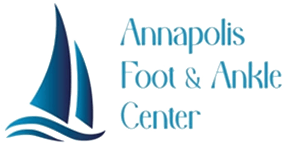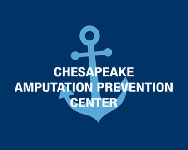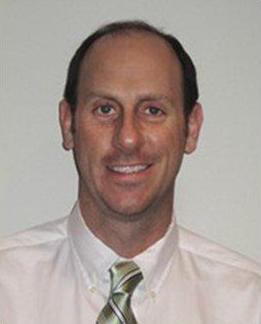What Are Advanced Wound Care Technologies?
Advanced wound care technologies represent the cutting edge of medical science, using innovative treatments to accelerate healing, prevent complications, and save limbs. These breakthrough therapies can heal wounds that traditional methods cannot address, offering hope to patients with chronic ulcers, diabetic wounds, and complex injuries.
At Annapolis Foot & Ankle Center's Chesapeake Amputation Prevention Center, our board-certified wound care specialists utilize the latest advanced technologies to treat non-healing wounds and prevent amputations. We're proud to offer Central Maryland's most comprehensive selection of cutting-edge wound healing treatments.
Why Choose Advanced Wound Care Technologies?
Traditional wound care fails in 40-60% of chronic wound cases, leaving patients at risk for amputation and serious complications. Advanced wound care technologies address the underlying causes of poor healing and provide solutions when conventional treatments aren't enough.
Benefits of Advanced Wound Care:
- Faster healing times - Reduce treatment duration by weeks or months
- Higher success rates - Heal wounds that resist traditional therapy
- Amputation prevention - Save limbs from surgical removal
- Reduced complications - Lower infection and recurrence rates
- Improved quality of life - Return to normal activities sooner
- Cost-effective - Prevent expensive complications and surgeries
State-of-the-Art Wound Care Technologies at Our Center
Bioengineered Skin Substitutes
Bioengineered skin substitutes are laboratory-created materials that mimic the structure and function of human skin, providing a biological framework for wound healing.
How Bioengineered Skin Works:
- Cellular matrix - Provides scaffolding for new tissue growth
- Growth factors - Stimulates natural healing processes
- Barrier function - Protects wound from infection and moisture loss
- Integration - Becomes part of the patient's own tissue
Types of Skin Substitutes We Use:
- Dermal substitutes - Replace damaged deep skin layers
- Epidermal substitutes - Restore surface skin function
- Composite substitutes - Combine multiple skin layer functions
- Acellular matrices - Collagen-based scaffolds for tissue growth
Best for: Diabetic foot ulcers, venous stasis ulcers, surgical wounds, and burns that haven't responded to conventional treatment.
Platelet-Rich Plasma (PRP) Therapy
PRP therapy concentrates the patient's own healing factors to accelerate wound repair and tissue regeneration.
The PRP Process:
- Blood collection - Small sample drawn from patient
- Centrifugation - Platelets concentrated using specialized equipment
- Application - PRP applied directly to wound site
- Activation - Growth factors released to stimulate healing
Benefits of PRP Treatment:
- Natural healing - Uses patient's own biology
- No rejection risk - Body accepts its own platelets
- Growth factor release - Multiple healing proteins activated
- Reduced inflammation - Modulates immune response
- Improved circulation - Stimulates new blood vessel formation
Learn more about our PRP therapy services.
Stem Cell Therapy for Wound Healing
Stem cell therapy harnesses the regenerative power of specialized cells to repair damaged tissues and promote wound closure.
How Stem Cell Therapy Works:
- Cell recruitment - Attracts the body's own stem cells to wound
- Differentiation - Stem cells become needed tissue types
- Tissue regeneration - New healthy tissue replaces damaged areas
- Angiogenesis - Formation of new blood vessels
Types of Stem Cell Products:
- Amniotic membrane products - Rich in growth factors and stem cells
- Umbilical cord products - High concentration of healing factors
- Adipose-derived products - From patient's own fat tissue
- Bone marrow concentrates - Patient's own stem cells concentrated
Ideal candidates: Patients with chronic wounds, diabetic ulcers, or wounds that have failed other advanced treatments.
Hyperbaric Oxygen Therapy (HBOT)
HBOT delivers 100% oxygen under increased atmospheric pressure, dramatically boosting the body's healing capabilities.
How HBOT Enhances Healing:
- Increased oxygen delivery - 15-20 times normal blood oxygen levels
- Enhanced cellular metabolism - Improved energy production for healing
- Antimicrobial effects - Oxygen-rich environment fights infection
- Angiogenesis stimulation - Promotes new blood vessel growth
- Collagen synthesis - Strengthens wound structure
Treatment Protocol:
- Session duration - 90-120 minutes per treatment
- Frequency - 5 days per week initially
- Total treatments - 20-40 sessions typically needed
- Monitoring - Progress assessed every 10 treatments
Conditions treated: Diabetic foot ulcers, radiation wounds, crush injuries, and compromised skin grafts.
Negative Pressure Wound Therapy (NPWT)
NPWT, also known as vacuum-assisted closure (VAC), uses controlled suction to promote healing in complex wounds.
NPWT Mechanism of Action:
- Fluid removal - Eliminates excess wound drainage
- Tissue approximation - Draws wound edges together
- Micro-deformation - Stimulates cellular growth
- Reduced bacterial load - Removes infectious material
- Enhanced perfusion - Improves blood flow to wound
Components of NPWT System:
- Foam dressing - Specially designed wound filler
- Adhesive drape - Creates airtight seal
- Drainage tube - Removes fluid and applies suction
- Vacuum pump - Provides consistent negative pressure
Best applications: Deep wounds, surgical sites, diabetic ulcers, and wounds with high drainage.
Learn about our comprehensive wound care services.
Growth Factor Therapy
Growth factor therapy applies specific proteins that signal cells to grow, divide, and repair damaged tissue.
Key Growth Factors Used:
- PDGF (Platelet-Derived Growth Factor) - Stimulates cell proliferation
- VEGF (Vascular Endothelial Growth Factor) - Promotes blood vessel formation
- EGF (Epidermal Growth Factor) - Accelerates skin cell growth
- FGF (Fibroblast Growth Factor) - Stimulates connective tissue repair
- TGF-β (Transforming Growth Factor-beta) - Regulates inflammation and healing
Application Methods:
- Topical gels - Direct application to wound surface
- Injectable forms - Delivered into wound tissues
- Impregnated dressings - Sustained release systems
- Spray applications - Even distribution over wound area
Advanced Wound Dressings and Materials
Modern wound dressings go far beyond simple bandages, incorporating active ingredients and smart technologies.
Antimicrobial Dressings:
- Silver-based dressings - Broad-spectrum antimicrobial action
- Honey-impregnated dressings - Natural antibacterial properties
- Iodine-releasing dressings - Controlled antiseptic delivery
- Polyhexanide dressings - Long-lasting antimicrobial effect
Moisture Management Dressings:
- Hydrogels - Maintain optimal moisture balance
- Hydrocolloids - Absorb excess drainage while maintaining humidity
- Alginates - High absorption capacity for heavily draining wounds
- Foam dressings - Cushioning and moderate absorption
Smart Dressings:
- pH-indicating dressings - Change color when infection present
- Temperature-monitoring dressings - Track inflammation levels
- Oxygen-releasing dressings - Deliver oxygen directly to wound
- Drug-eluting dressings - Controlled medication release
Patient Selection for Advanced Wound Care
Ideal Candidates for Advanced Treatments:
- Chronic wounds - Present for more than 4-6 weeks
- Failed conventional therapy - No progress with standard treatment
- High amputation risk - Limb-threatening wounds
- Complex wounds - Multiple contributing factors
- Recurring wounds - History of wound recurrence
- Large wound size - Extensive tissue loss
Comprehensive Patient Evaluation:
Before recommending advanced treatments, we perform thorough assessment:
- Wound assessment - Size, depth, tissue quality, drainage
- Vascular evaluation - Blood flow and circulation testing
- Infection screening - Bacterial cultures and sensitivity testing
- Nutritional status - Protein levels and overall health
- Underlying conditions - Diabetes control, immune function
- Patient factors - Compliance ability, support system
Learn more about our vascular testing services.
Treatment Protocols and Combination Therapies
Staged Treatment Approach:
Phase 1: Wound Preparation
- Debridement - Remove dead and infected tissue
- Infection control - Antibiotic therapy if needed
- Moisture balance - Optimize wound environment
- Offloading - Reduce pressure on wound area
Phase 2: Advanced Intervention
- Technology selection - Choose optimal advanced treatment
- Application protocol - Follow evidence-based guidelines
- Monitoring schedule - Regular progress evaluation
- Adjustment strategy - Modify treatment as needed
Phase 3: Maintenance and Prevention
- Protective strategies - Prevent wound recurrence
- Patient education - Self-care and monitoring
- Follow-up schedule - Long-term wound surveillance
- Risk modification - Address underlying causes
Combination Therapy Protocols:
Diabetic Foot Ulcer Protocol:
- HBOT + Bioengineered skin - Enhanced oxygen delivery with tissue replacement
- NPWT + Growth factors - Mechanical stimulation with biological enhancement
- PRP + Advanced dressings - Natural healing factors with optimal environment
Venous Ulcer Protocol:
- Compression therapy + Skin substitutes - Address underlying cause with advanced healing
- Stem cell therapy + Antimicrobial dressings - Regenerative medicine with infection control
Learn about our amputation prevention strategies.
Clinical Outcomes and Success Rates
Evidence-Based Results:
Bioengineered Skin Substitutes:
- Healing rates - 70-85% complete closure in clinical trials
- Time to healing - 50% faster than conventional care
- Recurrence rates - Significantly lower than standard treatment
- Amputation prevention - 60-80% reduction in amputation risk
Hyperbaric Oxygen Therapy:
- Diabetic ulcer healing - 85% healing rate vs. 45% standard care
- Limb salvage - 70-85% limb preservation in selected cases
- Quality of life - Significant improvement in patient function
- Cost effectiveness - Reduces overall healthcare costs
Stem Cell and PRP Therapy:
- Wound closure rates - 65-80% complete healing
- Pain reduction - Significant decrease in chronic wound pain
- Tissue quality - Improved strength and durability of healed tissue
- Patient satisfaction - High satisfaction with treatment outcomes
Insurance Coverage and Cost Considerations
Coverage Guidelines:
Medicare and Insurance Typically Cover:
- HBOT - For approved conditions like diabetic wounds
- NPWT - For appropriate wound types and sizes
- Bioengineered skin - When conventional therapy fails
- Advanced dressings - For complex wound management
Prior Authorization Often Required:
- Documentation - Failed conventional therapy
- Medical necessity - Clear clinical indication
- Treatment plan - Specific goals and timelines
- Provider qualifications - Specialized wound care training
Cost-Benefit Analysis:
- Amputation costs - $30,000-$60,000 initial procedure
- Lifetime care costs - $500,000+ for diabetic amputation
- Advanced therapy costs - $5,000-$25,000 for limb salvage
- Quality of life - Preserved mobility and independence
Patient Education and Home Care
Self-Monitoring for Advanced Wound Care Patients:
- Daily wound inspection - Look for changes in size, color, drainage
- Temperature monitoring - Check for signs of infection
- Pain assessment - Report increased or new pain
- Drainage documentation - Note amount and type of fluid
- Dressing compliance - Follow prescribed dressing schedule
Warning Signs Requiring Immediate Attention:
- Increased pain - Sudden or progressive worsening
- Fever or chills - Signs of systemic infection
- Red streaking - Lymphatic spread of infection
- Foul odor - Possible anaerobic infection
- Increased drainage - Sudden change in wound output
- Wound expansion - Getting larger instead of smaller
Research and Future Technologies
Emerging Wound Care Technologies:
- 3D bioprinting - Custom-printed skin grafts
- Nanotechnology - Targeted drug delivery systems
- Gene therapy - Genetic modification for enhanced healing
- Artificial intelligence - Predictive wound healing models
- Telemedicine monitoring - Remote wound assessment
- Smart sensors - Continuous wound environment monitoring
Clinical Trials and Research Participation:
We actively participate in clinical research to bring the latest treatments to our patients:
- FDA clinical trials - Access to experimental treatments
- Research partnerships - Collaboration with leading institutions
- Registry participation - Contributing to wound care databases
- Publication involvement - Sharing results with medical community
Frequently Asked Questions About Advanced Wound Care
A: If your wound hasn't shown significant improvement after 4-6 weeks of standard treatment, or if you have risk factors like diabetes or poor circulation, advanced wound care may be appropriate.
A: Most advanced treatments are well-tolerated. Some may cause mild discomfort during application, but many patients experience reduced pain as healing progresses.
A: Results vary by treatment and wound type, but many patients see improvement within 2-4 weeks. Complete healing may take several months for complex wounds.
A: Many advanced treatments are covered by Medicare and insurance when medically necessary and conventional treatments have failed. We help with prior authorization and documentation.
A: Yes, advanced wound care technologies have significantly improved limb salvage rates, preventing 60-80% of amputations in appropriate candidates.
Why Choose Annapolis Foot & Ankle Center for Advanced Wound Care?
Our Advanced Wound Care Expertise:
- Board-certified wound specialists - Specialized training and certification
- Comprehensive technology platform - Full range of advanced treatments
- Chesapeake Amputation Prevention Center - Dedicated limb salvage program
- Multidisciplinary approach - Coordinated care with specialists
- Research participation - Access to latest clinical trials
- Insurance expertise - Maximizing coverage for advanced treatments
Advanced Technologies Available:
- Bioengineered skin substitutes - Multiple product options
- Hyperbaric oxygen therapy - State-of-the-art chamber facility
- Stem cell and PRP therapy - Regenerative medicine options
- NPWT systems - Various vacuum-assisted devices
- Growth factor therapy - Evidence-based protein treatments
- Smart wound dressings - Latest antimicrobial and monitoring technologies
Don't Let Chronic Wounds Control Your Life
Advanced wound care technologies offer hope when traditional treatments fail. Our expert team provides Central Maryland's most comprehensive selection of cutting-edge wound healing treatments to help you heal faster and avoid amputation.
Schedule your advanced wound care consultation today by calling 410-266-7666 or contact us online. Same-day appointments available for urgent wound care needs.
Serving patients throughout Annapolis, Anne Arundel County, Prince George County, Calvert County, St. Mary's County, Kent Island, and the Eastern Shore with advanced wound care technologies for over 30 years.
Related Services:
- Comprehensive Wound Care Services
- Amputation Prevention Program
- Diabetic Wound Management
- Vascular Assessment and Treatment
- PRP Therapy Services







